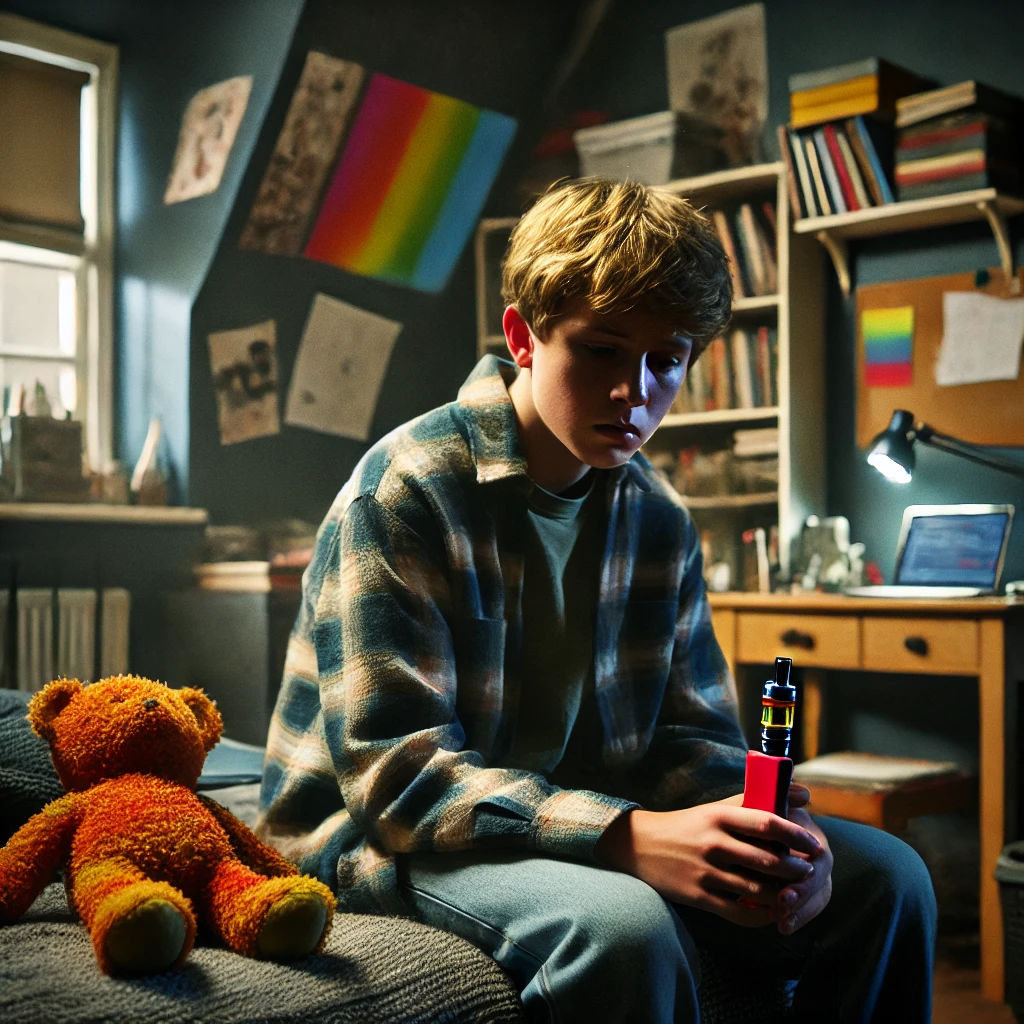The Shocking Story of a 14-Year-Old Boy’s Addiction to Spice-Laced Vapes

A Teenager’s Struggle with Spice Addiction: Ben’s Story
Ben, a 14-year-old boy whose name has been changed for privacy, found himself trapped in the grip of a dangerous addiction. Instead of focusing on school or spending time with friends, his mind was consumed with one thing: getting more Spice, a synthetic cannabinoid that mimics the effects of cannabis.
A Dangerous Dependency
Ben’s addiction began innocently enough. He first tried a vape at a friend’s house, believing it contained THC, the psychoactive compound found in cannabis. What he didn’t realize at the time was that the vape actually contained Spice, a much more dangerous and unpredictable substance. He quickly became dependent on it.
“I became dependent on it and I felt like a drug addict,” Ben told the BBC. “I realized I was doing it to feel normal and regulated.”
The Harmful Effects of Spice
Spice is cheaper to produce than cannabis, but it is far more potent and dangerous. Unlike natural cannabis, Spice is a synthetic drug created in a lab, often resulting in harmful side effects such as dizziness, breathing problems, heart palpitations, psychosis, and seizures. While Ben was lucky not to have experienced any immediate adverse reactions, the long-term effects of Spice use—especially in children—are largely unknown.
“I’d be like, ‘oh, you’re not as high as you were 10 minutes ago,’ so I’d have another bit,” Ben said, describing how he would vape throughout the day, even in school classrooms.
Hiding an Addiction
Ben’s addiction led him to hide his vapes in unusual places, such as the gutter above his bedroom window, the toilet cistern, and even inside old teddy bears. His mother, Katie, eventually learned about his use of Spice vapes through other parents but felt powerless to stop him.
“They [his friends] managed to stop because they knew it was bad, but he couldn’t,” Katie said. “We didn’t know what to do.”
The Growing Problem of Spice Vapes in Schools
Ben’s story isn’t unique. A new report found that one in six vapes tested across 38 schools in England contained Spice. Professor Chris Pudney from the University of Bath led an investigation into the use of Spice vapes in schools, using a portable device to detect synthetic drugs. His team collected nearly 600 confiscated vapes from schools across England, finding that one in six contained Spice and one in 100 contained THC.
The Vicious Cycle of Addiction
For Ben, what started as a communal activity quickly became a solitary addiction. He began purchasing vapes from a dealer he found on social media, meeting them at a nearby train station. Despite knowing the dangers, he found himself stuck in a vicious cycle of needing more.
“Without it [Spice], everything would feel really dull, I’d feel demotivated,” Ben said. “I knew it was bad for me, but as soon as I had finished one, I’d get another one—even when one was confiscated.”
Conclusion
Spice and THC vapes are illegal in the UK, and selling any nicotine product to someone under 18 is prohibited. However, the rise in synthetic drug use among teenagers like Ben shows that more needs to be done to protect young people from the dangers of these substances. Education, awareness, and stronger regulations are critical in preventing future cases of addiction and ensuring the safety of our youth.
If the difficulties outlined in this article are affecting you, please reach out to us, and we will try our best to help.


